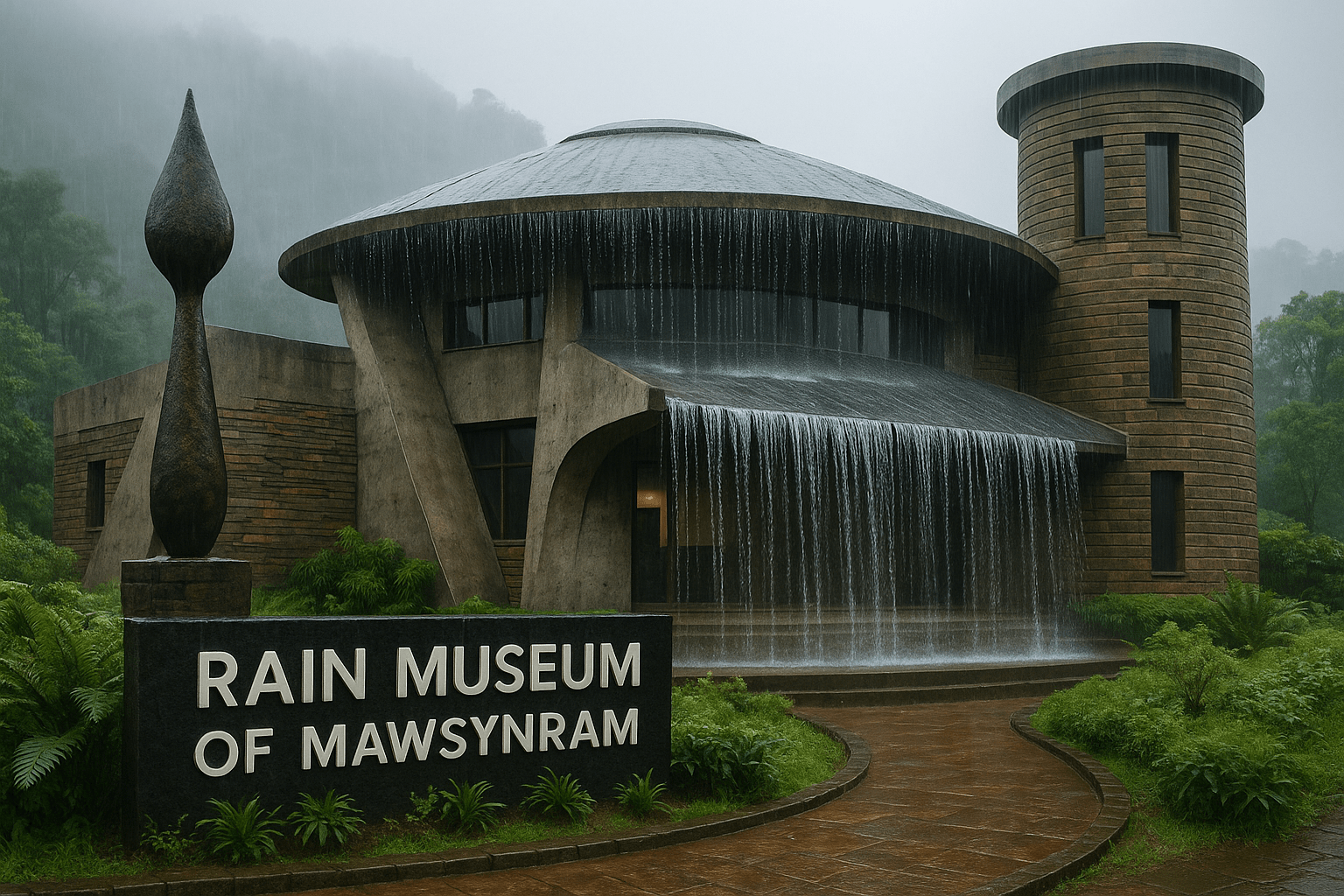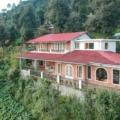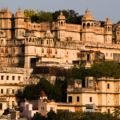Mawsynram’s Rain Museum: A Global First in Meghalaya’s Wettest Place

In the far reaches of Meghalaya, where the clouds linger as permanent guests and the sound of rain is a daily lullaby, lies Mawsynram, the wettest place on Earth. This mist-covered village, famed for receiving an astonishing 12,000 mm of annual rainfall, is now preparing to add yet another feather to its cap—the world’s first rain museum.
Slated to become a landmark in Meghalaya tourism, this innovative cultural and scientific space will blend immersive technology, traditional storytelling, and environmental education, making it a must-visit for monsoon lovers, climate enthusiasts, and curious travellers alike.
In this Blog
Why Mawsynram? A Land Where Rain is a Way of Life
Perched in the East Khasi Hills, Mawsynram is not just a place where it rains—it’s a place where rain shapes life. Locals adapt with ingenious innovations such as knups (bamboo and palm frond rain shields), soundproof thatched houses to soften the roar of heavy downpours, and the living root bridges—nature’s suspension bridges, crafted from intertwined tree roots over decades.
For centuries, rain has been at the heart of Khasi culture. Folklore, farming, architecture, and even daily routines are intertwined with the monsoon. Building the rain museum in Mawsynram, Meghalaya, isn’t just about showcasing weather; it’s about preserving and sharing an entire way of life.
Also read: Monsoon Guide to Mawsynram, Meghalaya (2025): Explore The Wettest Place on Earth
The Rain Museum: A Global First
Backed by an investment of nearly ₹35 crore by the Meghalaya Government, the Rain Museum will be the first of its kind in the world. Construction is scheduled to begin post-monsoon, with the aim of creating a space that is as inspiring as it is educational.
What makes it special?
The museum will be more than a gallery—it will be an immersive world where visitors can feel, hear, and understand rain in all its glory.
What Visitors Can Expect
1. Immersive Rain Simulation Zones
Experience the drama of the monsoon without stepping outside. These high-tech rooms will replicate the sound, smell, and sensation of rain, offering visitors a sensory journey through different rain intensities—from gentle drizzles to tropical downpours.
2. Interactive Science Exhibits
Engaging displays will explain cloud formation, rainfall patterns, the role of the monsoon in India’s ecology, and the effects of climate change. Interactive weather models and experiments will make it a hit with students and science enthusiasts.
3. Khasi Cultural Installations
Discover how the people of Mawsynram, Meghalaya, have lived in harmony with rain for generations. Traditional tools, crafts, and stories will reveal the resilience and creativity of the Khasi people.
4. Meteorological Research Center
A section of the museum will serve as a hub for weather monitoring, housing advanced instruments and possibly collaborating with institutions like the IMD and ISRO.
5. Augmented Reality & Storytelling Spaces
Through AR, visitors could walk through a Khasi village during a monsoon, hear folktales passed down through generations, and even witness the creation of a living root bridge over time.
Also read: Darjeeling or Meghalaya? The Ultimate Guide to the Coolest Places to Visit This Summer
Why the Rain Museum Matters
For Tourism
The museum is set to become a flagship attraction for Meghalaya tourism, drawing both domestic and international visitors. It will put Mawsynram firmly on the global travel map alongside iconic monsoon destinations.
For Science & Education
By combining meteorology with interactive learning, the museum will help raise awareness about climate change, water conservation, and environmental stewardship.
For Local Communities
Increased tourism will bring more opportunities for local employment, hospitality, and handicrafts, ensuring that the cultural and economic benefits are shared with the people who have lived with the rain for centuries.
Things to Do in Mawsynram, Meghalaya

While the world’s first rain museum will undoubtedly be the star attraction, Mawsynram Meghalaya offers plenty more to explore:
- Mawjymbuin Cave – Known for its naturally formed Shiva Lingam and awe-inspiring stalactite formations.
- Living Root Bridges – Ingenious bioengineering marvels woven by nature and nurtured by human hands.
- Local Markets – Sample Khasi snacks, handwoven textiles, and bamboo crafts.
- Nearby Waterfalls – Dramatic cascades like Wei Sawdong and Nohkalikai Falls (in neighbouring Cherrapunji) are a short drive away.
Best Time to Visit Mawsynram
The beauty of Mawsynram lies in its ever-present mist and lush greenery, but the experience varies by season:
- Monsoon (June to September) – Ideal for those who want to witness the raw power of nature. Travel can be challenging due to heavy rain, but the experience is unmatched for monsoon enthusiasts.
- Post-Monsoon (October to February) – Pleasant weather, clearer skies, and better road accessibility make this the best time for sightseeing.
- Summer (March to May) – Mild temperatures and fewer crowds, though occasional showers are common.
How to Reach Mawsynram, Meghalaya
- By Air – The nearest airport is in Shillong (about 60 km away), with regular flights from major Indian cities.
- By Road – Well-connected by road from Shillong, Cherrapunji, and Guwahati.
- By Rail – The nearest railway station is in Guwahati, Assam, about 150 km away, followed by a scenic drive.
Where to Stay in Mawsynram
Accommodation options are growing with the area’s rising popularity. Visitors can choose from charming Khasi homestays, eco-resorts, and guesthouses that offer warm hospitality and authentic local experiences.
A Celebration of Rain
The Rain Museum in Mawsynram, Meghalaya, is not just a building—it’s a tribute to one of nature’s most essential and poetic forces. It will allow visitors to understand rain not only as a weather phenomenon but as a cultural heartbeat, a scientific wonder, and a life-giving blessing.
As the first of its kind in the world, it promises to be a landmark that celebrates the monsoon in all its moods—gentle, fierce, nourishing, and transformative. Whether you’re drawn by science, culture, or simply the romance of rain, Mawsynram, the wettest place on Earth, is set to become your ultimate monsoon travel destination.
Written by: Elita Almeida





